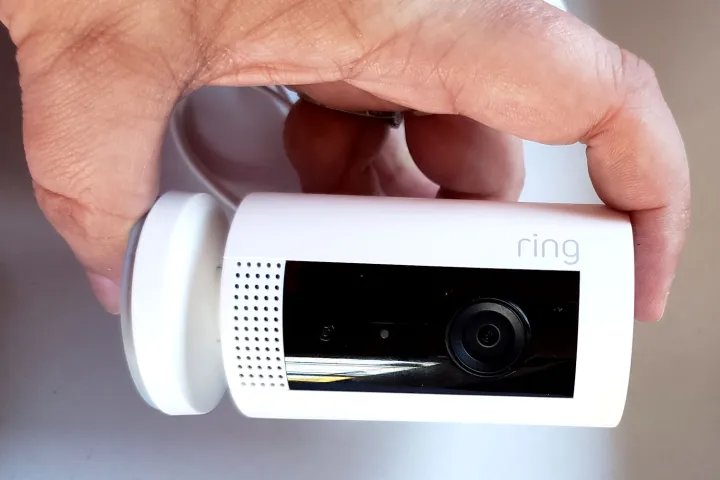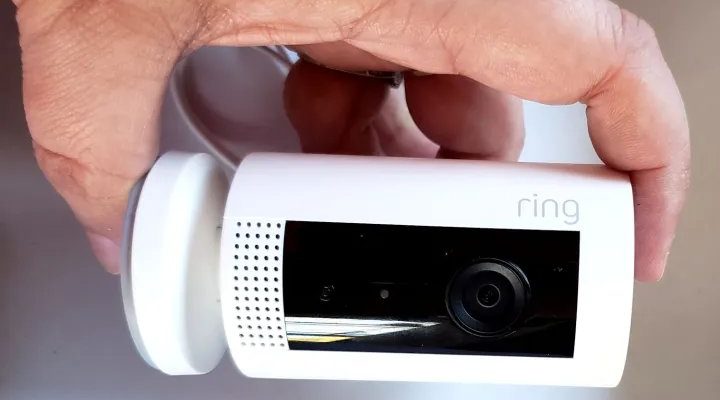
The Ring Smart Remote is designed to make life easier, connecting seamlessly with your Ring doorbells, security cameras, and even some smart home devices. But just like any connected gadget, it’s not invincible. Bad actors see opportunity in anything linked to Wi-Fi or Bluetooth. So if your Ring Smart Remote isn’t acting as expected, it’s totally fair to wonder: is someone else in the driver’s seat? Let’s dig into the signs, the causes, and—most importantly—what you can do about it.
Common Symptoms of a Hacked Ring Smart Remote
Let’s start with the basics. How can you actually tell if your Ring Smart Remote is compromised, or if it’s just being, well, glitchy? Sometimes a dying battery or a lost sync can make things look scarier than they are. But some warning signs are worth a second look.
- Unexpected device actions: If your remote triggers devices you didn’t select—or does so at odd times—that’s a red flag. For example, you might hit the button for your doorbell, but find the garage door opens instead.
- Settings mysteriously change: If customized settings like schedules or paired devices reset or change without warning, that can mean someone else is poking around.
- Notifications from unknown locations: Are you getting alerts that someone used the remote or accessed your Ring account from a city you’ve never visited? That’s not normal. Even odd codes or error messages can be a hint.
- Intermittent or no response: Sometimes, the remote just stops working or has major delays. Sure, that could be a battery or signal issue. But if troubleshooting basic stuff doesn’t fix it, hacking could be one culprit.
Here’s the thing: not every weird moment means hacking. But if you’ve run through the usual troubleshooting—checked the battery, reset and re-paired the device, made sure the firmware is up to date—and things still seem off, it’s time to investigate.
How Hackers Gain Access to Ring Remotes
Honestly, hacking a Ring Smart Remote isn’t like what you see in movies. No one is wearing a hoodie in a dark basement, typing furiously while thunder cracks outside. Most real-life attacks rely on weak passwords, outdated software, or sloppy device pairing.
- Weak passwords or shared logins: If you use the same simple password everywhere, or share accounts among family (or even neighbors), you’re making it easier for someone to guess or steal access.
- Unsecured Wi-Fi networks: A Ring remote usually talks to your Ring base or app over Wi-Fi. If your Wi-Fi isn’t locked down (think WPA2 or WPA3), anyone nearby could listen in or jump onto your network to mess with devices.
- Bluetooth pairing risks: Many smart remotes use Bluetooth for setup or updates. If your Bluetooth is in “pairing mode” for longer than needed, it’s an open door for strangers to connect.
- Outdated firmware: Like most smart gadgets, Ring pushes code updates to patch security holes. If your remote lags behind, known vulnerabilities give bad actors a foothold.
Let me explain with a quick story. A cousin of mine, tech-savvy but a bit too trusting, once let his Wi-Fi stay wide open for “guests.” Someone in his apartment complex noticed, paired a universal remote, and had a little fun with his smart lights. Lesson learned: secure everything, even if you think no one would bother.
Why Smart Remote Security Matters
You might be wondering, “Isn’t this overkill for a simple remote?” Not really. These devices are more than glorified TV clickers. A hacked Ring Smart Remote could give someone indirect access to your front door, cameras, or even security routines. That’s not just annoying—it’s a privacy risk.
Think about your typical day. You use smart devices for convenience, right? Locking doors on the way out, checking camera feeds without getting up, maybe even setting the thermostat. If someone else controls your remote, they have power over those linked devices, too. It’s not about dramatic spy movie scenarios—it’s the small, everyday stuff that can get disrupted.
And here’s the kicker: sometimes, a compromised remote doesn’t just mess with smart gadgets. Hackers could use it as a stepping stone to other parts of your network, poking around where they don’t belong. Layered security isn’t just IT jargon—it’s smart self-defense.
Step-by-Step Ring Smart Remote Troubleshooting
Alright, let’s break down what you can do if your Ring Smart Remote seems “off.” Don’t panic—start with these simple steps to either fix the problem or rule out common issues.
1. Check and Replace the Battery
First, make sure the remote’s battery isn’t on its last leg. Low power can cause erratic behavior that looks a lot like hacking but is much more innocent. Slide open the battery compartment, swap in fresh batteries, and see if things improve.
2. Reset and Re-Pair the Remote
If the glitch persists, it’s time to reset. Most Ring Smart Remotes have a small button or pinhole you press for several seconds to restore factory settings. After resetting, use the Ring app to re-sync the remote with your system. This also updates any internal code and forces re-authentication—think of it as a fresh handshake between your devices.
3. Update the Firmware
Outdated software puts you at risk. Open the Ring app, find your remote in the devices menu, and check for software or firmware updates. Running the latest version closes off known vulnerabilities and can squash bugs that look like hacking.
4. Review Device Access
Flip through your Ring account. Look at all devices paired with your remote and user access logins. Remove anything unexpected or unfamiliar. If you spot logins from odd locations or at weird times, change your password immediately.
5. Secure Your Wi-Fi
Make sure your Wi-Fi uses a strong password and current encryption. Reset your router’s default credentials if you haven’t already. It’s boring but essential—think of it as locking your front door versus leaving it wide open.
How to Recognize Legitimate Glitches vs. Hacking
Honestly, a lot of “hacked” smart devices are just confused by interference, old code, or setup mishaps. So, how do you separate harmless bugs from real danger?
- Patterns matter: A single odd event, like a missed code or brief sync issue, probably isn’t hacking. Repeated, persistent odd behavior—especially across different remotes or devices—deserves closer attention.
- Look for outside triggers: Did you just add a new device or switch Wi-Fi routers? Sometimes changes on your end confuse your remote until you reset or re-pair everything.
- Check Ring’s status: Occasionally, cloud outages or updates can cause wide-scale glitches. Check the Ring system status online if your remote and app act weird around the same time.
- Physical security: Has anyone had access to your home or remote recently? Sometimes pranks or accidents happen.
If in doubt, treat it as a security issue first. It’s always better to double-check and secure your system than to ignore signs until something bigger breaks.
Resetting and Re-Syncing Your Ring Smart Remote
If you’re convinced something suspicious is happening, a deep reset might be just what you need. Here’s how to do it safely.
- Remove the battery: Take out the battery and wait 30 seconds, then reinsert. This basic reset can clear up temporary gremlins.
- Factory reset: Use a pin or paperclip to press and hold the reset button (usually found on the back or inside the battery compartment) for 10–15 seconds. The remote’s light will flash or change color to signal a reset.
- Open the Ring app: Navigate to ‘Devices,’ select your remote, and choose ‘Remove Device.’ Then, follow prompts to pair it again as if it were brand new. This will generate fresh sync codes and clear out any strange connections.
After these steps, test all buttons and linked devices. If things still act up, your remote might be faulty or your account at risk. It’s smart to contact Ring support for deeper troubleshooting.
Protecting Your Ring Smart Remote from Future Attacks
Prevention beats fixing, every time. Here’s how to keep your Ring Smart Remote—and your whole smart home—safer.
- Use strong, unique passwords: Avoid pet names, birthdays, or “password123.” Use a mix of letters, numbers, and symbols.
- Enable two-factor authentication (2FA): Turn this on in your Ring account settings. It’s an extra step, but it stops most opportunistic hacks dead.
- Update devices regularly: Whenever you get a notification about firmware or app updates, don’t put it off. These patches often fix serious security flaws.
- Limit sharing: Only add trusted users to your Ring account and devices. Remove old friends, roommates, or anyone who no longer needs access.
- Secure your Wi-Fi and Bluetooth: Set your router to the highest available encryption, disable “guest” networks if they’re not needed, and never leave Bluetooth in pairing mode after setup.
Honestly, a little paranoia is healthy when it comes to smart home security. Taking a few minutes to lock things down now can save hours of stress later. Plus, it keeps your peace of mind intact.
When to Replace Your Ring Smart Remote
Here’s the tough part: sometimes, a remote just can’t be trusted again. Maybe it keeps glitching even after a full reset. Maybe it’s been physically damaged, or you just don’t feel comfortable after a potential hack.
- Repeated unexplained issues: If resets, updates, and re-pairing don’t solve the problem, there could be a hardware defect making it vulnerable.
- Physical signs of tampering: Scratches, pry marks, or loose components can mean someone messed with your device.
- Account still compromised: If you clean up your account but odd logins or device behavior continue, a fresh start is safest.
Smart remotes aren’t forever gadgets. Sometimes, like with old phones or modems, it’s just easier—and safer—to swap it for a new one. Most universal remotes won’t work with Ring, so stick with approved replacements to keep your security intact.
Alternatives and Extra Security for Smart Remotes
If you’re feeling a bit spooked by all this, you might want to rethink how you control your smart home. There are ways to reduce reliance on remotes or add extra safety nets.
- Control via app only: Most smart home systems let you control everything from your phone, which is easier to secure than a physical remote.
- Use voice assistants: Devices like Alexa or Google Assistant can handle tasks without needing extra remotes lying around. Just make sure their accounts are locked down, too.
- Centralize security: Some folks add a “hub” device that only accepts encrypted pairing and blocks unknown codes. It’s a smart way to limit exposure if you’re running a lot of gadgets.
No remote—no matter how “smart”—should be your only line of defense. Layer your controls, use strong settings, and stay aware of how your tech behaves.
Final Thoughts on Keeping Your Ring Smart Remote Secure
Tech can be a real lifesaver, but it also comes with new headaches—like worrying about hacking and digital mischief. If your Ring Smart Remote starts acting up, don’t ignore your instincts. Watch for symptoms, try the fixes, and don’t be afraid to reset or replace a device that feels off. Just like you’d fix a sticky door lock or a leaky faucet, smart home tools need regular attention and the occasional tune-up.
Staying one step ahead isn’t paranoia—it’s good sense. Keep your devices updated, your passwords strong, and your eyes open for anything weird. That way, your Ring Smart Remote stays just that: a helpful little gadget, not a source of stress.
